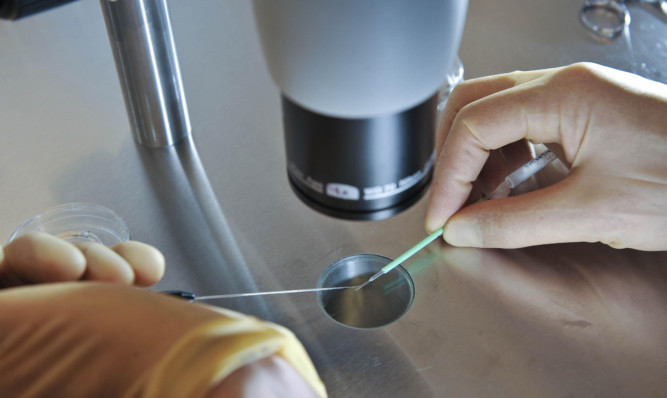
Couples desperate for a baby are turning to funding websites to bankroll expensive IVF treatment.
Many are hard pressed middle class 30-somethings who want private treatment, while others are unable to access NHS facilities.
And, with three cycles of IVF costing as much as £6,000, The Sunday Post can reveal many financially pressed parents-in-waiting are turning to so called crowdfunding websites to help bankroll their dreams.
A relatively new phenomenon, crowdfunding sees people pledge cash online. It has been used to fund everything from trendy cafes to students paying their way through university.
The most popular site gofundme.com currently contains more than a dozen appeals from British couples desperately trying to raise the cash they need to pay for IVF.
Among them is a couple in their 20s who are desperately trying to raise £2,050 towards their costs, after they lost twins following a previous cycle. Another couple have been trying to have a child for the past 10 years and estimate they will soon have spent £20,000.
Strict NHS rules on who can receive free IVF funding, and a postcode lottery over availability of NHS services, has been blamed for the trend.
Dr Sue Avery, of the British Fertility Society, said: “People are really highly motivated. Rather than walking away and saying they will not do it, they will look at pretty much anything to raise funds to do it.
“This is not really a surprise because if there is any chance it will succeed, they will give it a go.”
The online trending fund began in the US, where tens of thousands of pounds have been raised for couples.
But Anne Scanlan, of pro-life charity Life, fears the practice represents a “commodification” of childbirth.
She said: “I do find the whole thing quite difficult. Sometimes you have to accept you cannot have children and the NHS cannot keep giving cycle after cycle.”
In England, guidelines state women under the age of 40 who have not conceived after two years of trying or 12 cycles of artificial insemination should be offered three full cycles of IVF on the NHS. Women aged between 40 and 42 should be offered one cycle providing they have not previously had IVF.
In Scotland a ban on IVF for couples who already have a child is to be reviewed by NHS bosses.
The Scottish Government last year capped treatments at two per couple in a bid to drive down waiting lists. It is believed one in six Scots couples struggle to conceive naturally.
Do you have a story about IVF funding or NHS waiting lists? Email us or call on 0141 567 2812.

Enjoy the convenience of having The Sunday Post delivered as a digital ePaper straight to your smartphone, tablet or computer.
Subscribe for only £5.49 a month and enjoy all the benefits of the printed paper as a digital replica.
Subscribe